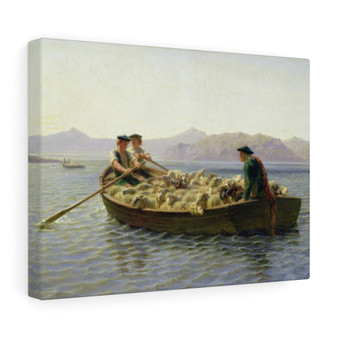Product Description
A Limier Briquet Hound, ca. 1856, Rosa Bonheur ,French. Historical artwork in public domain.
Rosa Bonheur, the French painter, and sculptor are known for the amazing precision and detail of her animal paintings. A brighter palette and a highly polished surface finish were remarkable characteristics of her painting, which is evident in this painting as well. After the 1850s, England saw the rise of a prosperous middle class. These were folks who wanted art in their homes, and as a result, artists benefited. People who adored dogs were a unique kind that couldn’t imagine life without their four-legged companion.
When you consider your dog to be a member of the family, you want to share that happiness with other dog owners. This life-like picture, created in 1856, during the mature period of her career, features a dog that belonged to a gentleman named Vicomte d’Armaille, and he was such a unique kind. It’s one of several portraits of hunting dogs and pets by Bonheur. The painting is so lively that you can see the genuine emotion and innocence of the Briquet hound, even through the picture.
A Limier Briquet Hound is one of Bonheur’s numerous animal portraits depicting hunting dogs and pets. Bonheur was a French painter of animals and sculptor known for accuracy and attention to graphic details of her paintings featuring animals.
Born in Bordeaux, France, in a family having four highly talented siblings, she was the eldest of them. She was enjoying sketching from her childhood days. Noticing her natural inclination toward sketching and painting, her mother, who was a music teacher herself, was employing highly ingenious methods of teaching to bring out the best in her daughter and nurture her potential talent.
Probably realizing that Bordeaux was too small a place to offer scope for developing the artistic and sculptural potentialities of their children, the family moved to Paris and she was admitted to a boarding school. But her carefree and, as she herself is reported to have confessed, tomboy manners in schools made her face the disgrace of refusal for admission into a boarding school. However, realizing the full extent of her potential, her father encouraged her to take up painting landscapes, animals, and birds as her full-time profession. He took her to those places in and around Paris that are close to fields and animal habitats so that she could develop her talent for realistic drawing and painting.
Her obsessional attachment to painting did not deter her from visiting primarily male-dominated places like horse fairs and slaughterhouses where the presence of female folks was rare. Her visits to these uncommon places were thought of as sources for gaining a deeper understanding of animal emotion and behavior.
After her initial debut with two paintings at the Paris Salon in 1841, she exhibited her paintings every year. By the year 1843, Bonheur was selling her paintings regularly. She exhibited her paintings in Salon every year until 1855. In this way, not only did her popularity increase but she also earned more money. With the inflow of sufficient income, she could travel to other destinations for studying as well as painting more and more animals.
Bonheur tasted commercial success in painting at a time when very few women had made any mark in this field. She always believed that it was her parents, especially her father, whose firm belief in her artistic talent prodded them to treat it as a profession and provide her training in that field. ‘Plowing in the Nivernds’, Horse Fair’, Spanish Muleteers Crossing the Pyrenees’, ‘Sheep bt the Sea’, ‘Weaning the Calves’, ‘The Lion at Home’, ‘Portrait of William F. Cody’s, ‘Our English Coasts (Strayes Sheep), are some of her famous paintings depicting animals.
In her painting, ‘ A Limier Briquet Hound’, Bonheur depicted a real-life specimen of a dog owned by a person known to her. Her ability to pay undivided attention to paint the different parts of the animal’s physical structure with utmost care has made the portrait famous. The sinewy muscular legs, its thoroughbred body, its focussed eyes, and the alertness in its gait have been painted so painstakingly that it gives an impression as though the animal is sizing up its prey before pouncing on it.
.: Manufacturing regions: UK, EU
.: Printing method: Giclée, Solvent inkjet
.: Lifelong color guarantee
.: 100% cotton fabric
.: Wooden frame
.: High image quality and detail
.: For indoor use
.: Pre-installed hanging hardware
.: Ensures proper locking to walls
Each custom stretched canvas begins with a 12-color Giclée print, produced from a choice of substrates. We then make a custom wooden frame. The canvas is then hand-finished by our experienced framing team, who ensure each corner fold is perfectly smooth and tight.
Designed for indoor use, custom stretched canvas prints are made from treated cotton - providing the smoothest of matte surfaces for exceptional design vividity. A combination of <b>quality and durability</b>, these hangings come with a <b>lifelong color guarantee; there's significant confidence in their withstanding the test of time</b>. On the backside, pre-installed hanging hardware <b>ensures proper locking to walls</b>.
Colors may vary slightly during the printing process.
#styleathome #homedecor #paintingsforhome #classicalart #gift #holidaygift #artlovergift #wallartprint




















